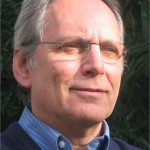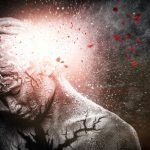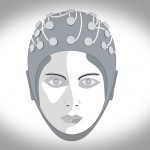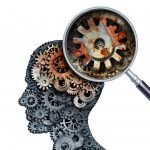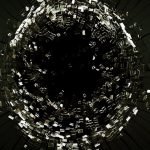The Body Remembers and Bears the Burden – When Biography Becomes Biology
Dr. Paul Epstein, ND
The body remembers what the mind forgets.
-Jacob L. Moreno, MD, Founder of Psychodrama
Our diseases tell a story not just of our cells and a diagnosis but of ourselves and our life histories. By taking the risk of listening, we may be led to the truth of what happened to us and the feelings that lie at the core of our authentic being. The adage “if you don’t know your history, you are doomed to repeat it ”is just as true in health and disease because chronic symptoms can be seen as repetition compulsion. Much disease is psychosomatic in origin, the result of unresolved conflicts, unconscious anxieties, and unfulfilled potential, with the self at war with itself. As an innate protective and survival strategy, people become split off and dissociated from parts of themselves. Healing happens when we unburden ourselves from the wounds of our life story and heal our relationship with self. An important aspect of mind-body medicine is simply bearing witness to history and to life story and listening with an unconditional loving presence with mindfulness, empathy, and compassion. The motto adopted by the American Association of Naturopathic Physicians for our profession is “physicians who listen!” I might add that physicians who listen are physicians who heal.In her book The Body Never Lies, Alice Miller1 focuses on what the long-range consequences of childhood abuse are on the adult body and how a child’s emotional traumas, repressed humiliation, and bottled rage can manifest as serious adult health problems. These stresses and traumas can fall on the continuum that leads to posttraumatic stress disorder as the body remembers and bears the burden, with personal history becoming somatic memory.
All neurosis is a substitute for legitimate suffering.
-Jung
Childhood wounds are carried deep within and affect our mental, emotional, physical, and spiritual health and life cognitively, behaviorally, and emotionally. The repression and denial of suffering and consequent strong emotions from childhood and the biographical story of our lives have profound effects on our body. Narrative medicine is recognizing the importance of telling your story and having an impartial witness to simply listen and care and then to provide support in a process of healing and recovery.
Perhaps all the dragons in our lives are princesses waiting to see us act, just once, with beauty and courage. Perhaps everything that frightens us is, in its deepest essence, a part of us that feels helpless and needs our love.
-Rike
Listening to the story of our patients and exploring the connection between their biography and their biology represent an initial step in the healing process. Important components are guiding them to look within, to listen to their symptoms, and to tap into their inner wisdom for the meaning, message, and opportunity of illness. Healing involves learning to accept what emerges with wisdom and compassion, as well as remembering and embracing into an experience of wholeness the heretofore invisible wounds. All sickness is homesickness, and all healing is self-healing. The journey home to your true self transforms stress, pain, and illness to a path of self-healing and awakening. When the war is over, the benefits are multifactorial: (1) You go from surviving life to living life. (2) You see, know, and trust that there are choices and resources now that were not available before. (3) You heal into wholeness the parts of yourself that you have withdrawn from in judgment and dismay and that may feel helpless and need love, including the parts you separated from and protected to survive and the roles you played. You now have created the space to make it safe to come home to your true self.
“Don’t Ask, Don’t Tell”
We have all heard the phrase “don’t ask, don’t tell.” For many children, no one asked and no one told because there was no one there to listen. For many patients in healthcare today, no one is asking, and no one is listening.
As NDs treating the whole person and the underlying causes of disease, we can ask, listen, and learn to work with and integrate whatever arises in the healing process. We address the truth and denial of suffering that patients have undergone in childhood or at any time in life, stress and trauma that ends up in the physician’s office in the form of chronic symptoms and disease. This goes beyond stress management techniques or mindfulness-based stress reduction to cope with and reduce symptoms. However important those components of care are, this is about mindfulness-based healing and transformation. This involves being unconditionally present and creating a space and healing relationship for people to get in touch with themselves and face the truth in a healing way. Citing as an example the action in the film The Horse Whisperer,2 Miller1 writes about the benefit of using a therapist as an “enlightened witness” to reaffirm a patient’s repressed reactions to a forgotten childhood experience that the body remembers and to counteract the repression and denial. While only the patient can do it, he or she cannot do it alone.
I write to share my perspectives as a wounded healer on my own journey of self-healing and awakening. In my clinical work, I have learned to listen and to help my clients listen with the ears of their hearts to all the parts and voices inside that are speaking and needing to be heard. The primary mind-body therapies I work with include an integration and mix of mindfulness, meditation, compassion, relaxation, yoga, expressive therapy, journaling, drawing, unconditional presence, narrative medicine, guided imagery, body-centered psychotherapy, gestalt, and internal family systems therapy in the context of our core naturopathic principles, working cognitively, behaviorally, emotionally, and spiritually.
Therapeutically, I liken my work to the “horse whisperer,” except with people, giving them space with love, compassion, and healing intentions of a beginner’s mind and nurturing patience, trust, and acceptance of what is. I allow the painful truth to come up and out, to express itself when ready (safely and compassionately), and to be released, unburdened, and let go of from the past (without harm or retraumatization). While removing a splinter hurts a lot, leaving it in will hurt even more in the long run. It is our choice to select a form of suffering; one leads to more suffering, and the other leads to the end of suffering. I hope that people will come to realize this and will choose a path of healing, removing the splinter once and for all however much it hurts. Often “it takes a village,” requiring an engaged internal and external support system. I am amazed at how many times during counseling I have heard that “you’re the first person I ever told this to!” A space was created, and they were finally ready to listen to themselves and to share the burden of their pain and truth.
When any experience of body, heart, or mind keeps repeating in consciousness, it is a signal that this visitor is asking for a deeper and fuller attention. Under all the tears, the pain, the fear, and the anger, we have contracted our self around, we can find freedom, joy, and ease in the face of all life.
Jack Kornfield, A Path With Heart3
Trauma is a complex psychobiological process. The body’s response to stress and trauma (the fight-or-flight or freeze response) is an essential adaptive and protective mechanism to cope with threatening situations for survival. A perceived threat to survival in the face of helplessness comes with terror and fear. The trauma response to a life threat when in a state of helplessness leads to a freeze response. The freeze response immobilizes spontaneous recovery, and discharge of the freeze response allows completion of escape or defense. However, if not discharged, chronic or traumatic stress leads to structural and functional alterations in the traumatized brain and nervous system.
Learned Helplessness
Exposure to different types of traumatic events increases the probability of posttraumatic stress syndrome. Therefore, the key to trauma is when the freeze response is not discharged. The stress from trauma precipitates a spectrum of psychoemotional and physiopathological outcomes. In its most severe form, it is diagnosed as a psychiatric disorder consequential to the experience of traumatic events. The key to healing and unburdening psychophysiologically is discharging and releasing the freeze response and freeing the somatic memory. Old traumatic emotional memories that live in the body are experienced as if they are still happening in the present.
The Importance of a Healing Presence
The role of the clinician and the healing relationship is essential in facilitating a self-healing intention and in creating the space for a healing environment within which vis medicatrix naturae can flourish with whatever healing modality we use in treatment. An important aspect of mind-body medicine is listening to the symptoms and engaging the inner wisdom of the client in a healing relationship with the illness, with all parts of himself or herself, and with the practitioner. We do this with our presence, our way of being, and our way of listening to and meeting experience with an empathic openness and acceptance of what is, allowing the natural unfolding and flow toward freedom and healing and empowering self-healing from within.
Research suggests that this way of being, an unconditional loving and caring presence of mindful awareness and compassion, is crucial to the healing process and supports all our therapeutic efforts. What most people often need is a good listening to, someone to be present and silently saying “I am listening, I hear you, and I care.” Our challenge as clinicians is how can we integrate our efforts to treat and cure with a healing presence? Acknowledging the value and importance of this, with wise intention and wise effort, we can learn to enhance these qualities in ourselves and our clients as part of the healing relationship and healing process. In curing, we are trying to get somewhere and are looking for answers, and our efforts are specifically designed to make something happen. In healing, we have questions instead of answers. We exist in the unknown. We trust the emergence of whatever will be and that insight will come. The challenge in medicine is not the choice between one or the other. We need both.
Prospective patients always ask: “What do you do therapeutically and clinically, and how can you treat me and my condition?” What I really do is just be unconditionally present, listen and care, practice compassion, and support you to look inside, listen, and be a healing presence for yourself, the real healer. On another level, I do the following: I am an ND specializing in mind-body medicine. I am a mindfulness meditation teacher and mind-body therapist. I do guided imagery. I do stress management. I may prescribe vitamins, minerals, herbs, and homeopathic remedies. I do internal family systems psychotherapy. I do mindfulness-based mind-body healing. I help you ask and live questions. I integrate healing and curing. I guide you and coach you to participate in transforming stress, pain, and illness into a journey and opportunity for self-healing and awakening.
It is written in the Tao-Teking4: “He takes men back to what they have lost and helps the 10 000 things to find their own nature, but he does not actually do anything.” “The way to do is to be.”
Illness is the unremembered body. I help people to listen, remember, and embrace their wounded parts and to become whole, heal, and “find their own nature.”
As healthcare practitioners, we need to learn how and what to treat. We can also acknowledge and live the questions and learn and practice how to be and where the healing is.
As clinicians, this is our art, integrating both.
Paths Are Many, Truth Is One: Therapies Are Many, Healing Is One
Mindfulness meditation and compassion practice represent some of the best training to cultivate simple basic presence, to be with things as they are, and to see and feel what is actually happening for both physician and client or patient. In mindfulness practice, we cultivate qualities of being and healing intentions (such as a beginner’s mind open to possibilities), patience and nonjudgment, and trust and radical acceptance—a nonstriving letting go by surrendering to the truth of what is with compassion. All these qualities deepen an unconditional loving and healing presence, which creates the compassionate space for vis medicatrix to come alive for healing, unburdening, and allowing new parts of ourselves to emerge.
We learn to trust in the unknown to guide us to what is needed, which will naturally arise in the space of our presence moment to moment. The present moment is where life can be found, and this is where and when truth and healing manifest. One might consider that the healing power of presence is similar to homeopathy without the remedy, intensifying the truth of what is happening and enhancing awareness of the edges of being stuck and blocked, which activates our vis medicatrix naturae and a healing response to stimulate movement through the resistance. This is also similar to a person hitting bottom in addiction, coming to the 12 steps, acknowledging the truth of the pain, and accepting his or her condition as the first step in recovery. People need to feel understood, be accepted and respected, have someone who is interested in them, and be encouraged to face their difficulties and unlock their own healing resources. Physicians who listen are powerful and effective mind-body medicine.
Who we are is as important as what we know. How we are is as important as what we do.
Dr Paul Epstein ND is an international teacher and speaker with more than 25 years’ experience in mind-body integrative medicine and its clinical application. As a teaching expert in mindfulness-based mind-body therapeutics, he integrates the “classical” naturopathic principles with his background and training as a mindfulness meditation and Buddhist Dharma teacher, interactive guided imagery guide, yoga instructor, and internal family system psychotherapist. As a practitioner, he integrates a whole-person integrative approach with contemplative psychotherapy, guiding each patient’s self-healing journey and connecting with his or her spiritual path. He maintains a private practice in Westport, CT, and mentors healthcare professionals to integrate mind-body therapies in their life and clinical work. He specializes in treating people with chronic and stress-related disorders and mind-body syndromes, transforming pain and illness into a journey of self-healing and an opportunity for spiritual awakening and happiness.
References
1. Miller A. The Body Never Lies: The Lingering Effects of Cruel Parenting. New York, NY: WW Norton & Co; 2005.
2. Evans N. The Horse Whisperer. New York, NY: Dell Publishing; 1995.
3. Kornfield J. A Path With Heart: A Guide Through the Perils and Promises of Spiritual Life. New York, NY: Bantam Books; 1993.
4. Lao Tsu. Tao-Teking. 6th century bc.



